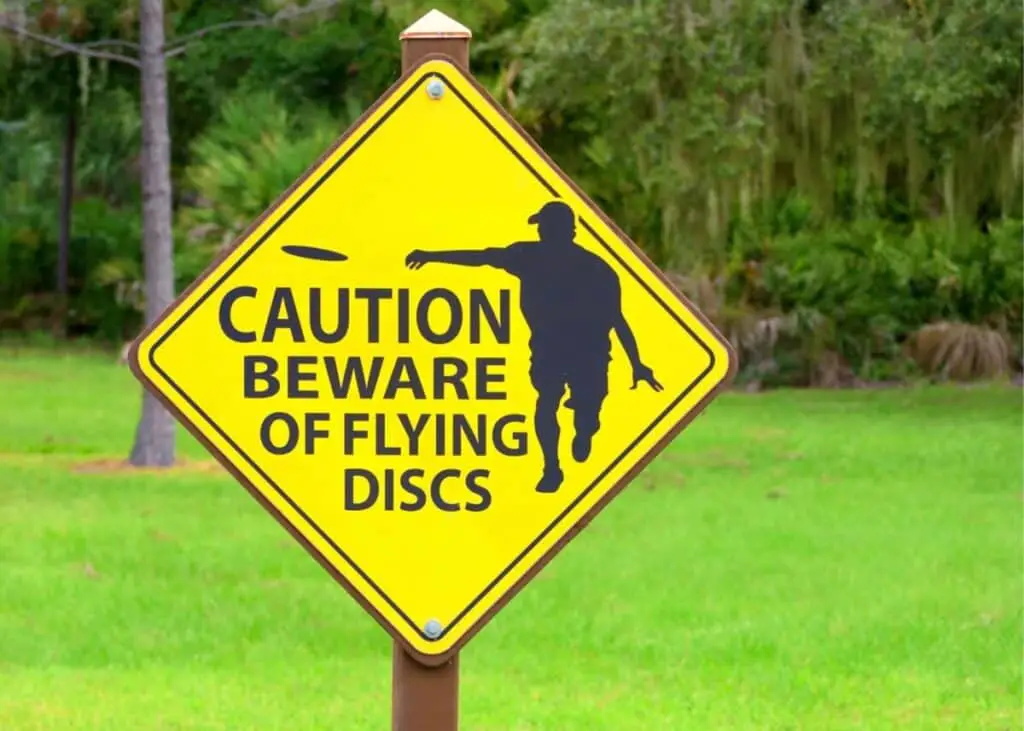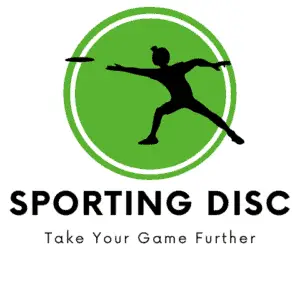I often see players throwing a forehand shot and wonder when will be the right time or situation to use a forehand throw in disc golf.
In this article, I’ll explain when you should throw a forehand in disc golf and how to improve your forehand for upcoming rounds.
Table of Contents
This is When You Should Throw a Forehand in Disc Golf
A player should throw forehand when they are faced with a shot that needs to finish to the right for a right-hand thrower. Other times the forehand should be used is for short par 3 drives from the teeing area, or throws of 200 feet or less. This is because most players can’t throw the forehand as far as a backhand.
A solid forehand can be a great addition to your throwing arsenal for disc golf. In this post, I’ll discuss when the forehand should be used and why.

When to Use a Forehand Throw
There are times when throwing a forehand shot in disc golf can be the right call. But, knowing when is the right time to switch to a forehand is harder to decide.
Here are the times when using a forehand throw can be to your advantage.
1. Finishing to the Right For a Righ-Hand Thrower
A right-hand backhand thrower will naturally finish their throws to the left as the rotation of the disc slows through the air.
If you’re more comfortable throwing an overstable or neutral disc, the tendency for the disc to finish to the left will be even more so. An overstable disc will always turn in the opposite direction of the spin of the disc. So, for an RHBH thrower, this means fading to the left.
If you’re faced with a shot where the course includes a dog ear to the right, throwing an overstable disc RHBH isn’t a great play.
This is when a forehand throw can help. A forehand is perfect for a disc that needs to finish to the right at a distance of fewer than 250 feet.
2. Forehand Throwing Motion Is More Natural
Some athletes with a background in other ball sports like baseball, softball, or football might be more accustomed to the motion of the forehand throw.
Even these players probably won’t be able to throw the forehand as far as a backhand when it comes to driving, but having a good forehand shot that you’re comfortable with can be useful on the course in certain situations.
The problem with a forehand throw even for players who are more comfortable with the forehand motion is to get the proper amount of snap on the disc when thrown.
3. Using a Very Overstable and Heavy Disc
Throwing this same disc forehand could help the disc to fly a little more flat without as much fade to the left.
4. Trouble Shots
At times you might find that you’re in a tough spot with an awkward throwing angle. Having the ability to throw backhand or forehand can give you a few more shot options and increase the chances of getting out of trouble and back into a good lie on the course.
Using an overstable disc with a forehand shot can also make the disc fly in an “S” shape when thrown at the right angle.
Perfecting these angles along with the right disc and an overstable disc can open up your game and make you an all-around better player.
How Do I Improve My Disc Golf Forehand?
Most players will stay away from the forehand throw because it feels unnatural and doesn’t fly as far as the backhand.
Below are a few tips you can use to improve your forehand throwing motion.
Release at the Correct Angle
The angle of release will go a long way to determine how much distance you can get when throwing a forehand.
The key to easily adding distance to the forehand throw is to get the nose of the disc down on release. If the disc is angled down on release the disc will fly farther and take pressure off your elbow.
Hold the Disc Right
There are several ways to hold the disc when throwing a forehand, depending on the shot you need. The best grip is a stack grip with two fingers.
The stack grip places the index and middle fingers extended and against the inside rim of the disc. The thumb is then placed on the top. The disc should be back as far into the webbing of your hand as possible.
Tucking the disc far back into your hand like this allows you to control more surface area of the disc. This allows for more control when the disc is thrown.
Lead With the Elbow
Many players will throw their forehand shot with too much shoulder, without leading with the elbow. This form can take away from your arm speed and overall power of the throw.
Leading with the elbow will also help with your follow-through after the disc has left your hand. A proper follow-through after leading with the below helps to push the disc down the fairway while maintaining the line.
What Disc Should I Throw Forehand?
When throwing a forehand shot, most players will tend to choose a more overstable disc than an understable disc.
What does this mean? The overstable disc will naturally want to turn to the left, whereas a forehand shot will turn to the right.
A forehand shot is not usually meant for distance as much as it is for control, so an overstable disc can help add to the control on the forehand shot.
Of course, keep in mind that a beginner just learning the game as well as a forehand can hurt themselves, in the long run, using a very overstable disc. The overstable disc can mask bad form.
It’s best to learn with a more neutral to understable disc and gradually move to an overstable disc for a forehand throw as you gain more experience.
Does Forehand or Backhand Go Farther in Disc Golf?
When it comes to pure distance from a teeing area 9 times out of 10 the backhand throw will fly for more distance than the forehand throw.
The backhand throw will engage more of a player’s core and lower body. The windup during a backhand drive loads the hips and creates more power for a backhand throw.
During a forehand throw, you’ll lead more with the elbow with less leading of the hips. So, not as much power will be coming from the lower body on the shot.
For more information on increasing disc golf drives, see this post here.
How Far Can You Throw a Disc Forehand?
For a majority of players, the max distance they can throw the forehand will be from 200 to 350 feet in distance.
For comparison, many pros can throw a backhand 450-500 feet.
Summary | When to Throw a Forehand in Disc Golf
Having a reliable forehand shot is a nice tool to have in the disc golf toolbelt. The forehand throw can get you out of trouble in heavily wooded areas, make the disc turn in the needed direction, or it might just feel more natural to you.
To further your game, taking the time to learn how to throw an effective forehand can be a great advantage.
